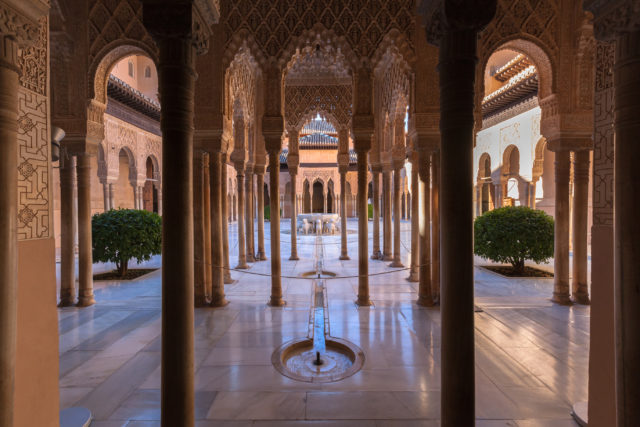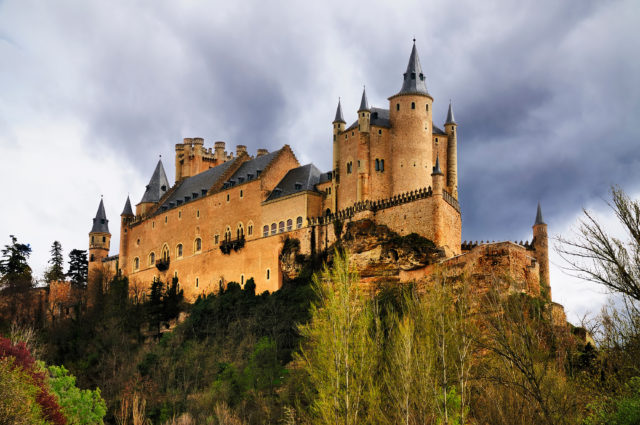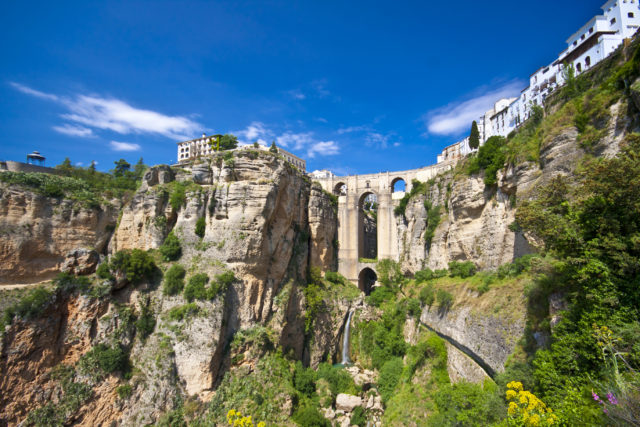Spain With Kids: Must-Do Activities and Must-See Destinations
ABOUT
At Our Whole Village, we plan meaningful vacations for families who want to create lifelong memories and show their kids the world in a more conscious and intentional manner.
WORK WITH US
We help families take meaningful vacations so that they can escape everyday life, show their kids the world and make lifelong memories - with care, confidence and peace of mind.
THE BEST FAMILY VACATIONS BY AGE
Your (free) guide to the top travel destinations for families with babies, teens and everyone in between.
DOWNLOAD NOW
ABOUT US
May 5, 2022
Spain is a destination steeped in groundbreaking architecture, iconic artwork, and more than a millennia-worth of history.
A Spain family vacation comes with sunny weather, expansive town squares that invite people-watching, and towering cathedrals. Spanish culture places a premium on children and families, which makes visiting Spain with kids an effortless pleasure.
But what are the must-do activities and must-see destinations on a family vacation to Spain? Whether you’re looking for things to do with kids in Barcelona, Madrid, or beyond, here are a few of our favorites.
Follow Gaudi’s Footsteps in Barcelona

© Tomas1111 | Dreamstime
The perfect Spain family vacation starts with a visit to the iconic La Sagrada Família followed by exploration of Park Güell. These two hotspots represent some of Catalan architect Antoni Gaudí’s finest modernist creations.
At the innovative 4D Gaudi Experience, explore how nature-inspired Gaudí’s creations. Exhibits include surround sound, active stereoscopic vision, special effects, and moving seats. Once you’ve cultivated an appreciation for Gaudi, make a beeline to La Sagrada Família Cathedral where you’ll enjoy the building’s intricate architecture.
Next, at the Park Güell, check out colorful dragons and distinctive candy-cane spires. This fantastical park was constructed between 1900 and 1914, and it contains whimsical, colorful shapes that’ll bring your family’s imagination to life. Like other Spanish parks, indulge in people-watching while seated on the cast-iron benches surrounded by vibrant mosaic works and porticoes.
Of course, Barcelona is filled with other treasures beyond Gaudi, from tapas to soccer, cathedrals to fairgrounds. You’ll also want to spend time savoring Spanish cuisine, checking out the city’s incredible museums, and strolling along La Rambla, a nearly one-mile pedestrian boulevard lined with street vendors, including candy stalls, florists, and gelaterias.
Barcelona is also an incredible spot for a fun family photoshoot with a professional through flytographer. Find out more about hiring a flytographer for your Spain family vacation.
Soak Up Madrid’s Rich Culture
Immersion in local culture sits at the center of the best travel experiences. In Madrid, a city famed for its palaces and museums, experience Spain’s sunny culture. Massive urban-improvement projects in recent years have rendered the city welcoming to pedestrians. So, savor the upbeat and orderly vibe of strolling Madrid’s historic streets.
Where to start?
Walk through the oldest and arguably most picturesque part of Madrid. Start at Plaza Mayor, which contains Europe’s largest coin and stamp market and represents a natural place to begin a walking tour of the city. Grab a snack at San Miguel Market before making your way to Plaza de la Villa as you head towards Plaza de Oriente, where you can visit the Royal Palace and the Almudena Cathedral.
If visiting the palace, skip the tour and just explore. Kids will love the red velvet thrones, massive dining room and the suits of armor worn by kings and princes (and their horses and dogs!).
No visit to Madrid is complete without a taste of the country’s beloved churros, a stroll at Retiro Park for people-watching and a picnic, and a visit to one of its stunning museums. Be sure to download our guide for more hidden gems.
Visit the Castle Manzanares El Real
Discover one of the best-preserved relics of the Renaissance past, the Castle Manzanares El Real, located in the sprawling Sierra de Guadarrama’s foothills. Constructed in 1475 as a military fortress, it later transitioned into a residential palace. Although some architectural tours can leave kids feeling bored, your family will feel happily surprised by Castle Manzanares El Real’s hands-on tour.
During the experience, your family will interact with two 17th-century residents of the historic location: Ms. Isabel Asensio and Mr. Pedro de Zuñiga y Salcedo. The actors playing these roles wear opulent Renaissance costumes and provide a wealth of knowledge about daily life. They offer entertaining and dramatic insight into the castle’s colorful heritage. What’s more, enjoy additional daily performances geared to children on the weekends.
The Alhambra in Granada

© Hronek | Dreamstime
One of the most stunning locations in Spain remains the Alhambra located in Granada. Sitting atop a hill, the Moorish palace is world-renowned for its elaborate beauty. The site initially contained a 9th-century Roman fortress, but the structure you see today was built during the 13th century. The Alhambra was occupied by King Ferdinand II and Queen Isabella, the royal couple who united Spain, as their palatial residence. In the 16th century, King Charles V added his own palace inside the complex walls, and construction work didn’t officially end at the site until 1957.
Before visiting, book entry to the Nasrid Palace at the official website. Although you can poke around the rest of the complex without tickets and at your leisure, you’ll need to stick to your allotted time slot to see the Palace. Remember that the Alhambra is located on the opposite side of the complex from the main entrance. This is at least a 20-minute walk, so make sure you set aside enough time for little legs to hoof it!
Although children 12 and under get in for free, every family member needs a ticket – even infants and toddlers. You’ll also want to make sure you pack sunglasses, hats, good walking shoes, sunscreen, and refillable water bottles. Depending on the time of year, Granada can prove toasty. And don’t forget a baby carrier for your littlest family members as no strollers are permitted in the Alhambra.
Stay at Alfonso XII and Explore the Alcázar in Seville
No trip to Spain would be complete without embracing the slow pace of life the nation celebrates. And there’s no better place to do this than the Hotel Alfonso XIII, a luxury collection hotel in Seville. Located in the heart of the city, it provides the perfect launching point for exploring the Andalusian capital. These include a visit to Seville’s most celebrated landmark, the Alcázar.
The Alcázar is the city’s Royal Palace, and many consider it the most representative monumental compound of Spain. Within the Alcázar’s expansive walls and gardens, explore the historical evolution of the nation. The Palace’s architectural influences represent an amalgamation of Arabic, medieval, Baroque, and 18th-century styles. But remember to pack comfortable walking shoes because the grounds prove massive.
As the most visited complex in the world, be prepared to deal with crowds. We recommend arriving in the morning to avoid the heat and cut the wait time in lines. Nevertheless, expect to stand in line for 20 to 30 minutes. But we promise the wait is well worth it. It showcases some of the most stunning gardens and palaces in the world.
Enjoy a Michelin-Star Meal
A visit to Spain also represents the ideal time to savor a meal at a MIchelin star restaurant. To date, Spain has nearly a dozen Michelin three-star restaurants, and they offer truly extraordinary dining experiences. Featuring impeccable ingredients and innovative preparations, these are among the finest places to eat on the planet.
They include gems like Quique Dacosta located on Spain’s Mediterranean coast. An avant-garde restaurant with a cozy ambiance infused with natural light, it serves incredible dishes fresh from the sea. These are presented like veritable masterpieces, making for an experience that titillates all five senses.
There’s also Cenador de Amós, which synthesizes traditional Iberian cuisine with modernist techniques. Situated in a lovely 18th-century palace in Cantabria, the establishment is also renowned for its sustainably sourced fish harvested from the cold Atlantic Ocean. There’s also DiverXO, featuring cutting-edge cuisine presented against a stunning backdrop. You’ll find this incredible restaurant nestled in Madrid’s thriving foodie scene.
Segovia Castle and the Roman Aqueduct

© Dennis Dolkens | Dreamstime
In Segovia’s Old City, explore the magical real-life castle that sparked Walt Disney’s inspiration for Sleeping Beauty’s Castle. The unique fortification sits at the confluence of the Esrema and Clamores rivers near the Guadarrama Mountains. Its location betrays the castle’s original role as a military fortification. But over the centuries, it transitioned into a royal residence, a seat of parliament, a state prison, and an artillery college and military academy.
The Aqueduct of Segovia represents another hotspot you won’t want to miss. Constructed during the second half of the 1st century A.D., it marked a high point in Roman architectural achievements. The towering public works project once supplied water from the Frío River to the city, continuing this mission into the 20th century. Remarkably, the arches and pillars of the structure include two-story arcades crafted from solid stone blocks that fit so perfectly together they required little to no mortar.
Charming Cadaqués & the Costa Brava
Nestled in the heart of Costa Brava is a destination your family will love, the home of famed artist Salvador Dalí in Cadaqués. Known as the Portlligat House-Museum, this charming location encompasses a group of fishermen’s cabins arranged in a maze-like configuration.
Over the course of four decades, Dalí modified the property, transforming it into a one-of-a-kind workshop and home. The site is infused with plenty of Surrealist elements, from giant eggs to a lip-shaped sofa, and irregularly-proportioned rooms. This results in the feeling you’re walking in a dream world.
The Costa Brava is also known for incredible gastronomic offerings, breathtaking coastal landscapes, towering monuments, and cultural events. Among our favorite destinations are the small bays of Palafrugell and Begur with their stunning ocean views, featuring crystal clear water, steep cliffs, and lush plant life. On a visit, you’ll also want to head to the Sant Sebastià Lighthouse in Llafranc. The lighthouse showcases breathtaking views 858 feet above sea level.
City of Arts and Science and Paella in Valencia
A day is well spent in Valencia at the City of Arts and Sciences, a destination that comes with a major “wow” factor. Characterized by cutting-edge buildings, each proves striking in its own way. For example, the Oceanographic building looks like something out of the 25th century with its arching lines and shining facade of windows, and the Agora building is reminiscent of a blue whale breaking the surface of the water. Within each of these buildings, you’ll find myriad activities for all ages.
At the Museu de Les Ciències Príncipe Felipe, a building resembling a massive whale skeleton, there’s an interactive science museum your children will enjoy exploring. Exhibits let them learn about science, technology, and nature in engaging and exciting ways. There’s even an egg incubator where children may be lucky enough to spy a new hatchling. Besides the Science Museum, kids will get a kick out of the Garden of Astronomy with its eye-popping L’Umbracle, an open structure containing a landscaped walkway with plants indigenous to Valencia. And L’Hemisfèric contains an IMAX Cinema, including a laserium and planetarium, with the appearance of a giant eye.
All of this exploration can work up an appetite, which presents the perfect opportunity to savor Spanish paella. This dish needs to be on every family’s bucket list. Consider it surf-and-turf mixed with rice and slow-cooked in savory spices, including crimson saffron. Authentic paella is made with short-grain rice and should be served in the pan it was prepared in. Avoid restaurants that offer it in individual portions as this screams frozen, reheated food. To be on the safe side, enjoy it at one of these Valencia restaurants: Restaurante Levante, La Pepica, La Riuà, Casa Roberto, or Casa Carmela.
White Towns (Pueblos Blancos) in Southern Spain

© Kasto80 | Dreamstime
In the Andalusian region of Southern Spain, you’ll find the “pueblos blancos of Andalucia.” These white villages prove incredibly photogenic, so have your cameras (or phones) at the ready. One of our favorite villages is Ronda, first settled in the 6th century B.C. by the Celts as Arunda. As a testament to the age of the site, nearby cave paintings date to more than 12,000 years ago.
There’s also Vejer de la Frontera, considered by many to be the most picturesque village in the region. The town has a relaxed and friendly vibe, and it contains some of the most beautiful views you’ll find in Andalucia. Whitewashed buildings give way to narrow cobblestoned streets and ancient monuments. Pops of color from flower boxes and vines make it a true feast for the senses.
You’ll also want to make space for a trip to Olvera, perched dramatically on a rugged hilltop. It boasts one of the largest and most impressive castles in the area and an equally noteworthy cathedral. Both buildings dominate the skyline, giving you the feeling you’ve stepped back in time to medieval Spain.
Cudillero and Other Fishermen Villages in Northern Spain
Spain is known for its impressive collection of architecture, from towering cathedrals and castles to quaint white villages. Because of its location in the northern region of Asturias, it has been shielded from heavy tourism. This translates into a quaint fishing village that has preserved its hardscrabble maritime heritage. With a population of 5,000, it’s a fairy-tale location featuring crayon-colored houses in various hues.
The town has the appearance of a settlement straight out of the Amalfi Coast, yet it boasts a fascinatingly diverse history. They say the town was founded by the Vikings, which is still apparent in the Nordic-influenced language of the area. Besides soaking up great views and interesting history, Cudillero is also excellent for those interested in seafood-based cuisine, exuberant folk dances, and pagan-inspired festivals like L’Amuravela. Held every June, the festival culminates in the burning of life-sized papier-mâché giants like Las Fallas in Valencia.
But the charming fishing villages don’t stop with Cudillero. A tour of the area will take you to many unique seafaring towns with unique appearances and feels. Others worth visiting include Tazones, a former whaling village put on the map after a visit by Charles V, Holy Roman Emperor. Its Old Quarter features colorful fishermen’s cottages, including one covered entirely in seashells.
What to Do and See in Spain With Kids
Soak in Spanish culture and enjoy one-of-a-kind cultural experiences on your next family vacation. Along the way, explore Barcelona’s architecture and Madrid’s historic center. Vacationing in Spain with kids involves activities steeped in Iberia’s vibrant heritage. Your family will explore delicious cuisine, famous artwork, and the country’s rich cultural heritage.
Are you ready to start crafting your family’s Spain family vacation itinerary? We can help. We’ve got the travel expertise, local connections, and experience with family travel to ensure you enjoy the best vacation possible.
Let’s chat!
OUR SERVICES
HOME
COPYRIGHT © OUR WHOLE VILLAGE 2021
DESIGN BY GIRLBOSS DESIGNER | CUSTOMIZED BY ALEX COLLIER DESIGN
about
TRAVEL SERVICES
DESTINATIONS
BLOG
PLAN A TRIP
FREE TRAVEL GUIDE
TERMS AND CONDITIONS
hello@ourwholevillage.com
+1 305 432 2612
